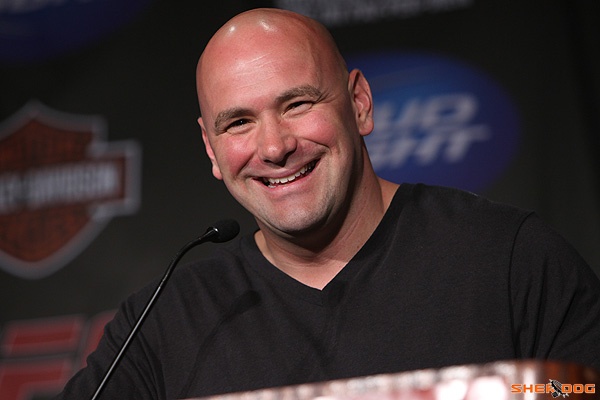For all the criticism of the UFC, it has done wonders for the sport of MMA. This was never truer than in the Zuffa, LLC, era under the leadership of the Fertitta brothers, Frank and Lorenzo. Not only did the siblings take a $2 million investment and turn it into a $4 billion organization, but in doing so they took the sport of mixed martial arts and gave it real legitimacy.
Nothing better illustrates the impact Zuffa had on MMA than the first season of The Ultimate Fighter. As a 17-year-old who tuned in to watch season one, my casual fandom turned into a full-blown obsession. That particular season was coached by two absolute legends, Chuck Liddell and Randy Couture, between their first and second epic battles in the cage. The middleweight bracket created some of the biggest names and most entertaining fighters the modern era of the UFC has ever seen.
Chris Leben got his start in the UFC on TUF. Who can forget his comeback win over Terry Martin? Or all of the subsequent wars in which he took tons of damage while still coming forward, win or lose.
Legends like Kenny Florian and Josh Koscheck were also on the first season. So, too, was the middleweight winner of the show, Diego Sanchez. Sanchez is still going strong after his Sept. 8 victory over Craig White.
The light-heavyweight bracket created the most memorable and meaningful event in my MMA fandom: Forrest Griffin vs. Stephan Bonnar. Their technique may not have been at the highest level, but they went toe-to-toe for 15 minutes in an all-out bloody war that UFC President Dana White credits as the reason why Spike TV greenlit a second season.
The TUF franchise may have jumped the shark recently, but for 20 seasons it provided a way for fans to get acquainted with up-and-coming fighters, some of whom would turn into stars in the UFC. The reality series became the breeding ground for UFC champions, including the aforementioned Griffin, Matt Serra, Rashad Evans, Michael Bisping and T.J. Dillashaw, and contenders like Ryan Bader, John Dodson, Nate Diaz and Roy Nelson.
The Fertitta brothers’ impact on MMA extends past The Ultimate Fighter. Zuffa was instrumental in getting a set of unified rules together and worked hand-in-hand with the Nevada, California, New Jersey and Mohegan Sun athletic commissions to legalize MMA in several states, culminating with the last state, New York, legalizing MMA in April 2016, just a few short months before Zuffa announced the sale of the UFC to WME-IMG.
Frank and Lorenzo Fertitta were able to secure high-profile sponsors for the organization, including Anheuser-Busch, Harley Davidson and the U.S. Army. This in turn drove their revenue and was the first step in increasing fighter purses. Sure, there is still a long way to go in the way of compensation for the fighters, and specifically UFC fighters, but without these key sponsors the ball would have never gotten rolling.
The TV deals that the Fertitta brothers were able to secure brought the UFC to the forefront, from the initial deal with Spike TV on through the multi-year $813 million deal with Fox that spanned the flagship station “Big Fox,” Fox Sports 1, Fox Sports 2 and FX.
I’m not the first to criticize the UFC for what I think are its shortcomings in its rules and regulations, but it wouldn’t be fair to harp on all the negatives without shining some light on the positive steps the UFC has made to increase the visibility and quality of MMA in the United States and abroad.

